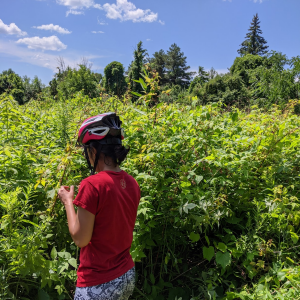
What is NetworkNature Reads?
#NetworkNatureReads is inspired by #ReadingRainbow and the #NewYorkTimes #ByTheBook series, both of which spread a love of reading by highlighting stand out books and the people who love them. Our goal is to do the same, but with a #naturebasedsolutions flavor. Every month, we will feature one book selected by a NetworkNature member.
We believe that literature widens perspectives and can foster connection with human and environmental communities. Read Wild Geese by Mary Oliver if you aren’t sure what we mean.
This month’s interviewee is Sarah Arfeen, a Communications Expert for the Events and Project Communications team at ICLEI Europe.
Want to get involved? Contact hello@networknature.eu to suggest a book!
Tell us about yourself! What role do nature and reading play in your life?
Reading was a huge part of how I learned about nature especially when it came to getting a global understanding of the natural world from an array of perspectives, and the role nature plays in many cultures.
Which book did you pick and why?
I’ve just finished reading the 'Children of Time' by Adrian Tchaikovsky! It is a sci-fi novel spanning thousands of years where we follow the trajectory of two disparate societies. One of them leans increasingly toward complex technologies that rely on nature. To me, this emphasises that society’s place in nature and how they can harness biological principles to overcome hurdles related to collective development.
Can you share a specific moment from the book that resonates with you personally? How does it connect to your work with Nature-based Solutions projects?
The book is peppered with moments where a brute force approach flails, until a scientific discovery relying on organic systems enables the society to elevate itself, benefitting not only the protagonists we’re following as readers, but also the many species that the solutions are premised on. I think the clearest connection is how the book accentuates the benefits of cooperating with the web of fauna and flora around us rather than reducing it to the bare minimum required.
In what ways do you see the themes or lessons from the book aligning with the goals of conservation and the challenges we face in combating biodiversity loss today?
Throughout the book, there is a strong current of exploring different opinions as well as challenging dogmas to find out novel ways of working on existential problems. I believe a major challenge is the alignment of multiple parties toward integrated solutions, especially since biodiversity loss is a longitudinal problem that requires long-term plans, and continuous buy-in from all communities involved is necessary.
If you were recommending this book to a colleague or a friend within the conservation community, what key takeaway or message would you highlight?
The lynchpin of many conflicts across the novel is effectively communicating perspectives, whether it is between individuals, or between entire groups. Keeping with genre tropes, in the book, we see technologies to ease communications emerge as scientific discoveries, allowing for inter-species sharing. My lesson here is that earnest communication is a major enabler of societal advancements, and finding ways to bridge perspectives helps us develop solutions that benefit everybody – all the while holding nature at the center of it all.
Related Projects
